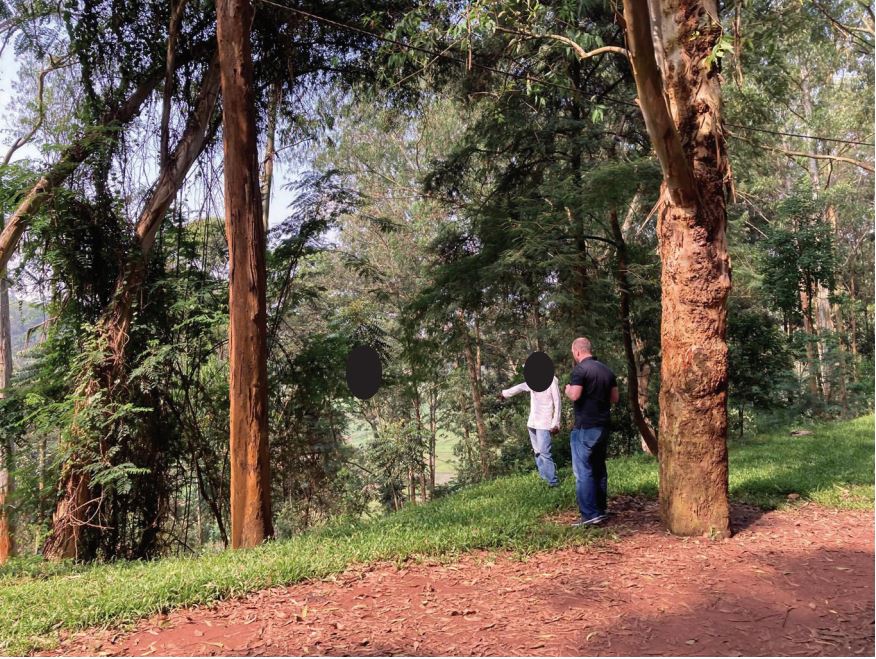
Homeland Security arrests Ohio man they say raped and murdered in Rwandan genocide
The feds have arrested an Ohio man who they say participated in the Rwandan genocide by striking men, women and children on the head with a nail-studded club and then hacking them up with a machete
The Rwandan genocide took the lives of about 800,000 Tutsis, the ethnic minority of the country, over 100 days in 1994. Boston-based prosecutors say that Eric Tabaro Nshimiye, 52, was one of the many perpetrators of that horror while a politically involved medical student there.
U.S. Homeland Security Investigations special agents arrested Nshimiye from his Uniontown, Ohio, home on March 21. He made an initial appearance in federal court in northern Ohio, where he is detained until he appears in federal court in Boston at an as-yet-unscheduled date.
The feds say that Nshimiye, who also goes by the last name Nshimiyimana, was a medical student in the small, central African country at the University of Rwanda campus in Butare starting in 1991.
Butare is a city in the south of the country known to be more cosmopolitan, intellectual and diverse than the rest of the country as a whole. Despite the vibrant setting, the feds say that while at the university, Nshimiye was an active member of the ruling MRND political party, which was led by Rwandan’s ethnic majority the Hutus. At the time, according to charging documents, the Hutus made up 85% of the country’s population.
Observers say that Hutus dominated the Republic of Rwanda ever since it gained independence from Belgium in 1962 and instituted policies that discriminated against and in some cases enacted violence against the Tutsis, leaving many of the ethnic minority to flee and some to form a rebel guerilla army known as the Rwandan Patriotic Front.
The RPF invaded Rwanda from neighboring Uganda and forced the Hutu leader to agree to political power-sharing agreements bridging the two ethnicities. But on April 6, 1994, a plane carrying President Juvenal Habyarimana was shot down, which an affidavit supporting the charges in this case described as an assassination that “precipitated a period of political and ethnic violence in Rwanda.”
In particular, Hutu extremists with positions of power in an interim government formed after Habyarimana’s assassination, called for the killing of prominent opposition figures, including Tutsis and moderate Hutu politicians,” HSI Special Agent Matthew Langille summarized in his affidavit. “Included among those killed were government ministers opposed to the extremists.”
The killing spread all over, as Hutu soldiers, civilians and militias, including the youth militia of the MRND party — to which prosecutors say Nshimiye belonged and trained with in a field near the university — “engaged in genocidal mania using machetes and clubs to beat and hack to death thousands of Tutsis wherever they were found.”
The feds say that Nshimiye played an active role in identifying Tutsis at the university and the hospital and also stationed himself at roadblocks to help identify Tutsis. Prosecutors say his involvement became more physical and that fellow killers as well as survivors have identified him “as among the most vicious University students” during the genocide.
Witnesses specifically told investigators of the time Nshimiye allegedly killed a mother and then took a machete and spiked club to the woman’s 14-year-old son. He would then participate in burning their bodies. Another witness said that Nshimiye also regularly raped and killed Tutsi women.
The feds say that Nshimiye fled Rwanda to Kenya after RPF rebels defeated the Hutu extremists in power and the genocide came to an end. He was then granted asylum to the U.S. as a refugee in 1995 and soon sought to become a permanent resident, a status he was granted in 1998. He became a naturalized citizen in 2003. He has lived and worked in Ohio since 1995.
A machete and a collection of tools that federal prosecutors say extremist Hutus, allegedly including Eric Tabaro Nshimiye, 52, used to murder Tutsis during the Rwandan genocide of 1994. (Courtesy / U.S. District Court)
Twagiramungu Ferdinand Twagiramungu, Mubirizi village’s leader, places and organises hundreds of skulls belonging to victims of the 1994 Rwandan Tutsi Genocide in Mubirizi, Rusizi District, on May 5, 2023 where more than 1100 bodies have been found since March, making the area the largest mass grave discovered since 2019. (Photo by Clement DI ROMA / AFP via Getty Images)

